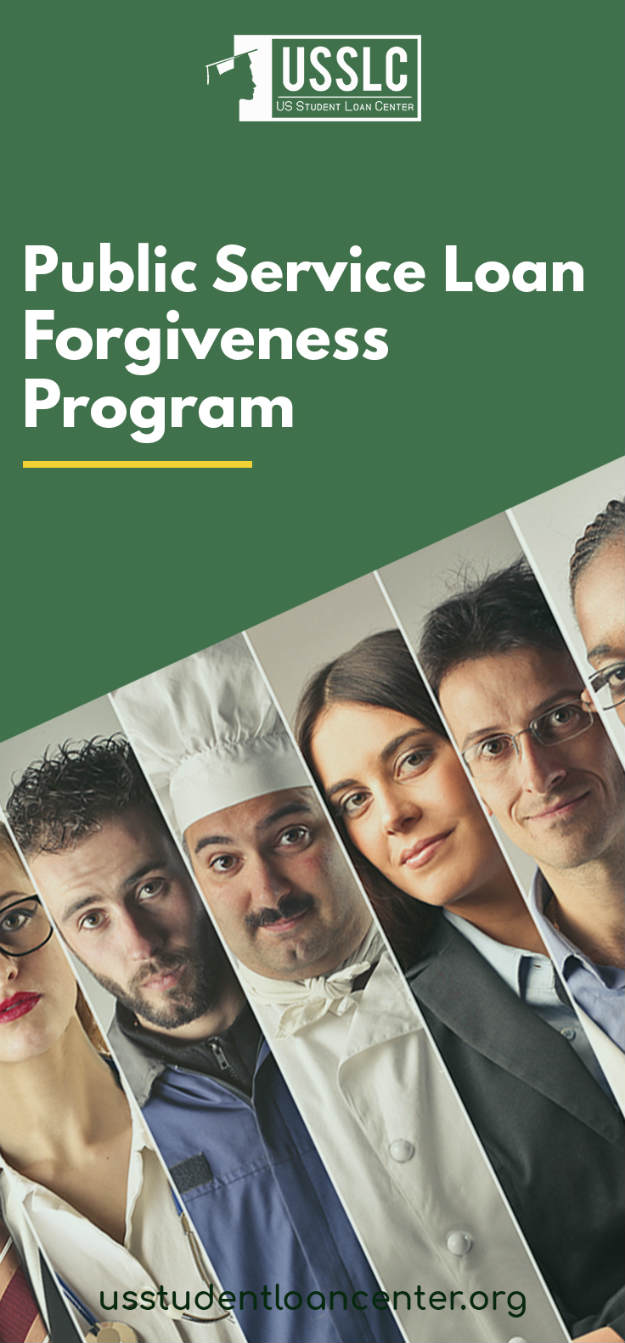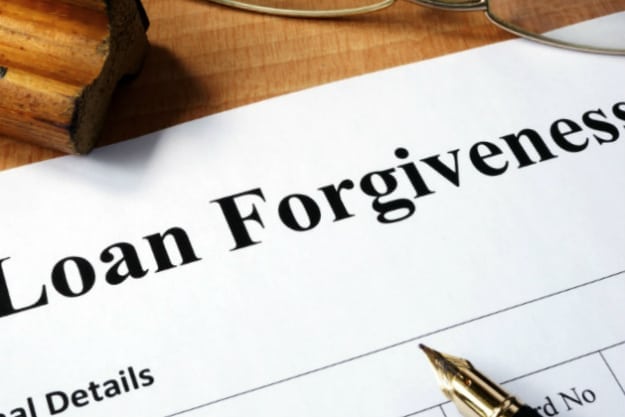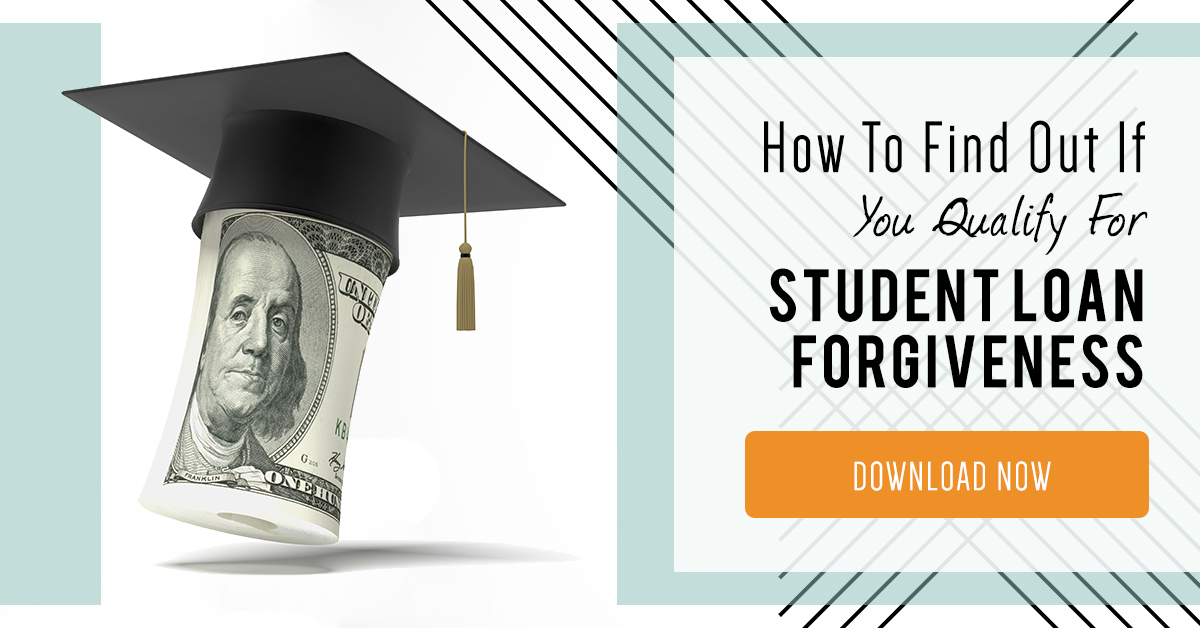Student loans are a fact of life for many working adults.
About 44 million Americans have student loans.
And the average debt is more than $37,000.
For people in lower-paying jobs such as teaching and law enforcement, the Public Service Loan Forgiveness program offers some relief.
(Note: Need to know if you can qualify for student loan forgiveness? Many people qualify but never find out until it’s too late, and before they know it, they are overpaying on their student loans. Get the Definitive Guide To Student Loan Forgiveness to easily find out if you can qualify for one or more of the many Student Loan Forgiveness programs offered by the Dept. of Education. Click here to learn more.)
Public Service Loan Forgiveness Program | Relief For Qualified Public Service Professionals
In this article, we’ll answer:
- What Is the Public Service Loan What Is the Public Service Loan Forgiveness Program (PSLF)?
Program? - Who Can Qualify?
- How Do You Apply?
What Is the Public Service Loan Forgiveness Program (PSLF)?

PSLF is a program that aims to provide relief to student loan borrowers. It caters to public service professionals who have trouble paying their student loans because their positions offer lower pay. The program began in 2007 under President George W. Bush.
The PSLF forgives student loans of public service professionals who have been making 10 years’ worth of on-time payments. There is no tax to pay on the forgiven part of the loans. Borrowers first began receiving forgiveness under PSLF in October 2017.
The Department of Education estimates that about 600,000 borrowers have expressed interest in the program. But the qualifications can be complex, so it’s important to make sure that you have met all requirements.
Who Can Qualify?

To qualify for the program, you’ll need to meet some criteria. These relate to the work you do, who you work for, the type of loan you have and other factors. It’s important to make sure that you check all the boxes to qualify.
First, you’ll need qualifying employment. These are jobs at organizations that serve the public good. These include:
- Your local, state, federal or tribal government.
- A 501(c)(3) tax-exempt non-profit.
- Other types of non-profits if they provide certain types of public services. These include a public defender’s office, emergency services, or services for the elderly or small children.
Working for a labor union, a partisan political organization, a for-profit or a non-profit that doesn’t provide qualifying services do not count.
1. You Will Need to Have the Right Kind of Loans
Only Direct Loans such as Stafford Loans qualify.
If you borrowed before 2007, there is a chance that you have a different kind of loan, such as the Parents Plus Loan or a Federal Family Education Loan.
You can check out what kind of loans you have by visiting the National Student Loan Data System and looking up your loans there.
2. You Will Also Need to Be in the Income-Based Repayment (IBR) Program
IBR caps your student loan payment at 15% of your disposable income.
It’s not necessary to be on IBR for the whole time that you are paying your loan. You will have to reapply for IBR every year.
3. You’ll Need to Make 120 Qualifying On-time Payments
Payments made while you are in school don’t count.
Neither do ones made in the six months after you finish school or anytime you are in deferment or forbearance.
Qualifying payments need to be made within 15 days of the due date and they must be for the full amount due. Any extra you pay will not count toward an extra payment.
4. You Need to Work Full-time
Part-time workers do not qualify for the Public Service Loan Forgiveness Program.
(Pro Tip: Need an easy and fast way to find out if you qualify for student loan forgiveness? Downloand this free guide to find the best way you can take advantage of student loan forgiveness programs. Learn more here.)
How Do You Apply?

1. Submit an Employment Certification Form
Enrollment in the program is not automatic.
You’ll need to complete and submit the Employment Certification form to the Department of Education first.
It is important to do this as early as possible. This is to make sure that you’re making payments that your workplace qualifies. It’s also to ensure that you’ll still qualify for PSLF in case changes are made to the program in the future.
Any workplace official who can certify employment can fill out the form for you. It’s vital to have the form completed.
2. Keep Yourself Updated
Always keep up with the news on the public service loan forgiveness program.
This is the only way to make sure it will remain an option for you in the future.
3. Apply and Continue Working for a Qualified Employer
After you’ve made 120 payments, you can then apply to have the rest of your loans forgiven.
You’ll need to still work for your employer when you submit your application and throughout the time it is accepted.
AAP Journals & Periodicals answers essential questions about the Public Service Loan Forgiveness Program:
This forgiveness payment can make a massive difference in the lives of people who dedicate themselves to service to the public.
Throughout the term of your loan, it’s important to keep up with any changing requirements so that you don’t get unpleasant surprises later.
By continuing the good work that you’re doing now, you can see significant savings on your student loans and enjoy a reward for the good you do for your community.
(Bonus Tip: Want all the pros and cons of student loan forgiveness all in one easy and accessible spot? The Definitive Guide To Student Loan Forgiveness will go over each type of forgiveness program and weigh your options for you, so you don’t have to. Click here to get more info on the free guide.)
Have you qualified for the Public Service Loan Forgiveness Program? Let us know in the comments section below.

